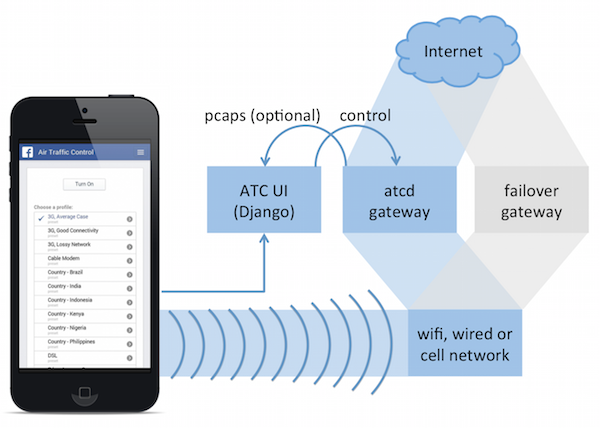At some points in time I’ve had the patience of a monk trying to contend several times with different slow networks while accessing Facebook.
The social media team also seem to recognize that this problem’s predominant in some regions. Hence, in a press release recently, it acknowledged that a large portion of people across the world who connect to their site do so via a much slower and less reliable wireless network –a condition they’re working to remedy.
Consequently, the Facebook team has developed a tool known as ATC (Augmented Traffic Control). ATC is a project that allows developers to control the connection that a device has to the internet. Developers can use the tool to test their application across varying network conditions, easily emulating high speed, mobile, and even severely impaired networks.
“We created Augmented Traffic Control with open source technology, building on the work of others. We want to give the open source community the same chance to improve on our ideas and innovate with their own — so today we are open-sourcing our design for Augmented Traffic Control on GitHub,” an excerpt from the press release.
Before the ATC idea blossomed, the team decided to test the tool using a real world scenario by attempting to recreate a 2G network at an infrastructure hackathon conducted in 2013. The reported stated further that, they purchased two second-hand base stations, mobile phones and spread the gospel that people should join the effort.
However, that initial project was futile.
“Right away, more engineers signed up to help, and after getting a solid start at the Hackathon, we acquired a good understanding of the cellular software protocols… For two months, we worked on simulating a 2G connection, but it proved to be problematic,” another excerpt reads.
The moment of eureka came for the ATC team at another infrastructure hackathon in May 2013 when they decided to shift their focus and pivot to WIFI.
“It was at another infrastructure Hackathon in May 2013 that we decided to shift our focus… we pivoted our efforts from creating a 2G network to building a Wi-Fi network that could be set to different simulation speeds by the engineers using it”.
It didn’t end there, the team proceeded further by capitalizing on the experience garnered from the 2G project and created a set of simulations (with the project) using the Django and Bootstrap interface.
“In the following weeks, we set up Augmented Traffic Control so it could simulate 2G, Edge, 3G, and LTE networks. We specifically simulated the most common network connectivities in countries such as Brazil, India, Indonesia, Kenya, Nigeria, and the Philippines”.
With this feature fully developed and functioning, lots of people across the globe who access the site via extremely slow wireless networks should have a reason to smile.
Access the full documentation of the ATC project.
Photo Credit: Spencer E Holtaway via Compfight cc, Facebook






















